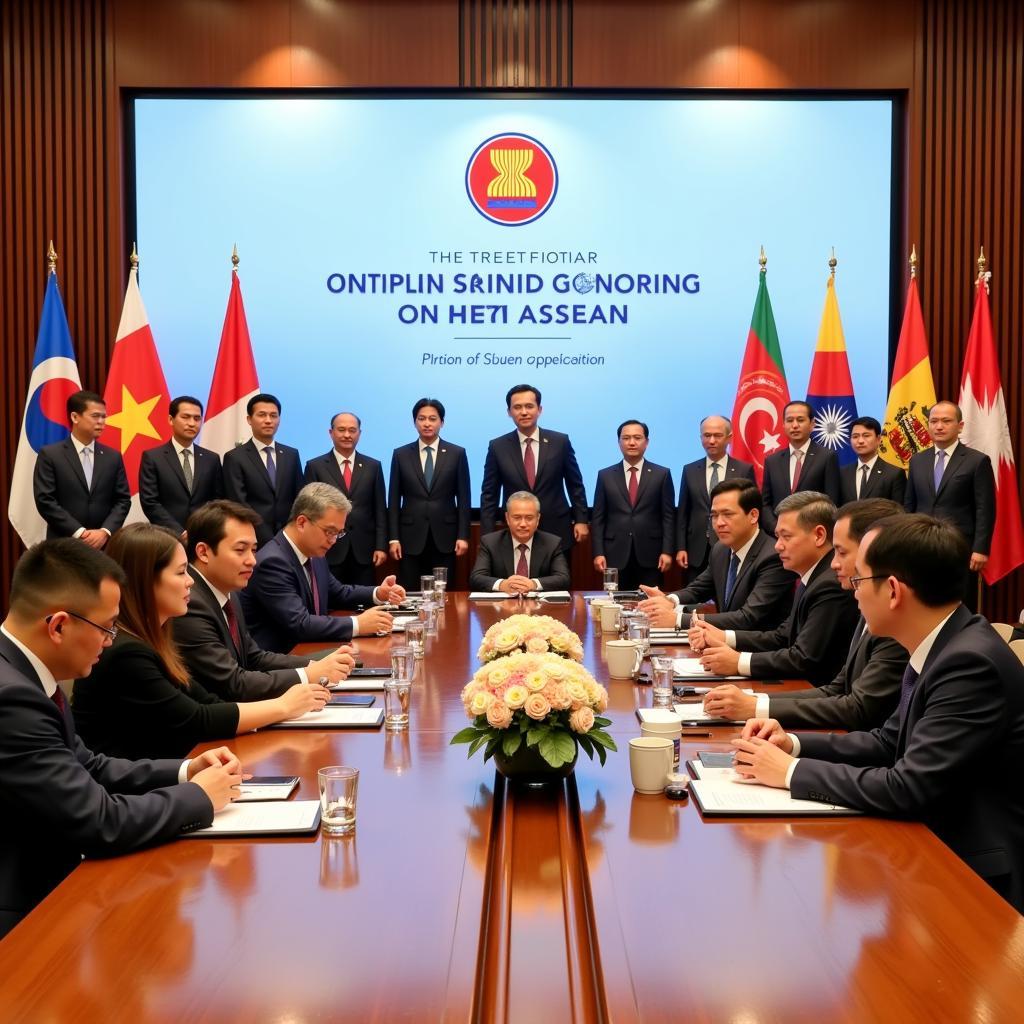“Ano Ang Layunin Ng Samahang Asean?”—What are the aims of the ASEAN association? This question lies at the heart of understanding this dynamic and increasingly influential Southeast Asian organization. ASEAN, the Association of Southeast Asian Nations, represents a powerful force for regional cooperation and development, impacting everything from economic growth to political stability and cultural exchange. This article delves into the core purposes and objectives that drive ASEAN, exploring its historical context, key principles, and future aspirations.
The Foundational Principles: Peace, Progress, and Partnership
ASEAN’s origins lie in the desire for regional stability and cooperation following a period of intense conflict and Cold War tensions. Founded in 1967, the Bangkok Declaration outlined the organization’s initial objectives: to accelerate economic growth, social progress, and cultural development. These goals remain central to ASEAN’s mission, underpinned by a commitment to regional peace and stability. The organization strives to create a harmonious environment where member states can collaborate for mutual benefit, fostering a sense of shared identity and purpose.
Promoting Regional Peace and Security: A Cornerstone of ASEAN’s Mission
A primary aim, captured in the phrase “ano ang layunin ng samahang ASEAN,” is to maintain peace and security within the region. ASEAN promotes peaceful conflict resolution and dialogue, advocating for non-interference in internal affairs. This commitment to peaceful co-existence has been instrumental in preventing major conflicts between member states and fostering a climate of cooperation.
Economic Integration: Driving Growth and Prosperity
ASEAN actively pursues economic integration, aiming to create a single market and production base. This involves reducing trade barriers, promoting investment, and facilitating the free flow of goods, services, and capital. The ASEAN Economic Community (AEC) blueprint outlines the roadmap for achieving this vision, promising greater prosperity and competitiveness for the region. “Ano ang layunin ng samahang ASEAN” in terms of economics? Simply put, it’s about building a stronger, more integrated, and more prosperous Southeast Asia.
Social and Cultural Development: Fostering a Shared Identity
Beyond economic goals, ASEAN recognizes the importance of social and cultural development. The organization promotes education, health, and social welfare initiatives, striving to improve the quality of life for all its citizens. ASEAN also encourages cultural exchange and understanding, fostering a sense of shared identity and regional pride.
Evolving Objectives in a Changing World: Adapting to New Challenges
As the global landscape evolves, so too do ASEAN’s aims and priorities. The organization has increasingly focused on addressing non-traditional security threats such as terrorism, transnational crime, and climate change. “Ano ang layunin ng samahang ASEAN” in the 21st century also encompasses strengthening regional resilience and enhancing cooperation in areas like disaster management and cybersecurity.
A People-Oriented ASEAN: Empowering Citizens and Communities
A key aspect of ASEAN’s future vision is the concept of a “people-oriented ASEAN.” This emphasizes the importance of empowering citizens and communities, promoting human rights, and ensuring that the benefits of regional integration are shared by all. This focus reflects a growing recognition that sustainable development requires not only economic growth but also social justice and inclusivity.
Engaging with the World: Building Partnerships and Promoting Regional Influence
ASEAN actively engages with the international community, building partnerships with other countries and organizations. The organization seeks to promote regional dialogue and cooperation on global issues, strengthening its role as a key player on the world stage. “Ano ang layunin ng samahang ASEAN” in the global context? It’s about building bridges, fostering understanding, and advocating for the interests of Southeast Asia.
 ASEAN International Cooperation Forum
ASEAN International Cooperation Forum
Conclusion: A Shared Vision for a Vibrant Future
“Ano ang layunin ng samahang ASEAN?” Ultimately, the aims of ASEAN revolve around creating a peaceful, prosperous, and resilient Southeast Asia. By promoting regional cooperation, integration, and development, ASEAN strives to enhance the lives of its citizens and strengthen its position in the global arena. The organization’s ongoing commitment to its founding principles, coupled with its adaptability to new challenges, ensures that ASEAN will continue to play a vital role in shaping the future of Southeast Asia.
FAQ
-
What does ASEAN stand for?
- ASEAN stands for the Association of Southeast Asian Nations.
-
When was ASEAN founded?
- ASEAN was founded in 1967.
-
How many member states are there in ASEAN?
- There are ten member states in ASEAN.
-
What is the ASEAN Economic Community (AEC)?
- The AEC is an initiative to create a single market and production base in Southeast Asia.
-
What are some of the key challenges facing ASEAN?
- Some key challenges include addressing non-traditional security threats, promoting sustainable development, and narrowing the development gap between member states.
Need further assistance? Contact us 24/7: Phone: 0369020373, Email: [email protected], or visit us at: Thon Ngoc Lien, Hiep Hoa, Bac Giang, Vietnam.

